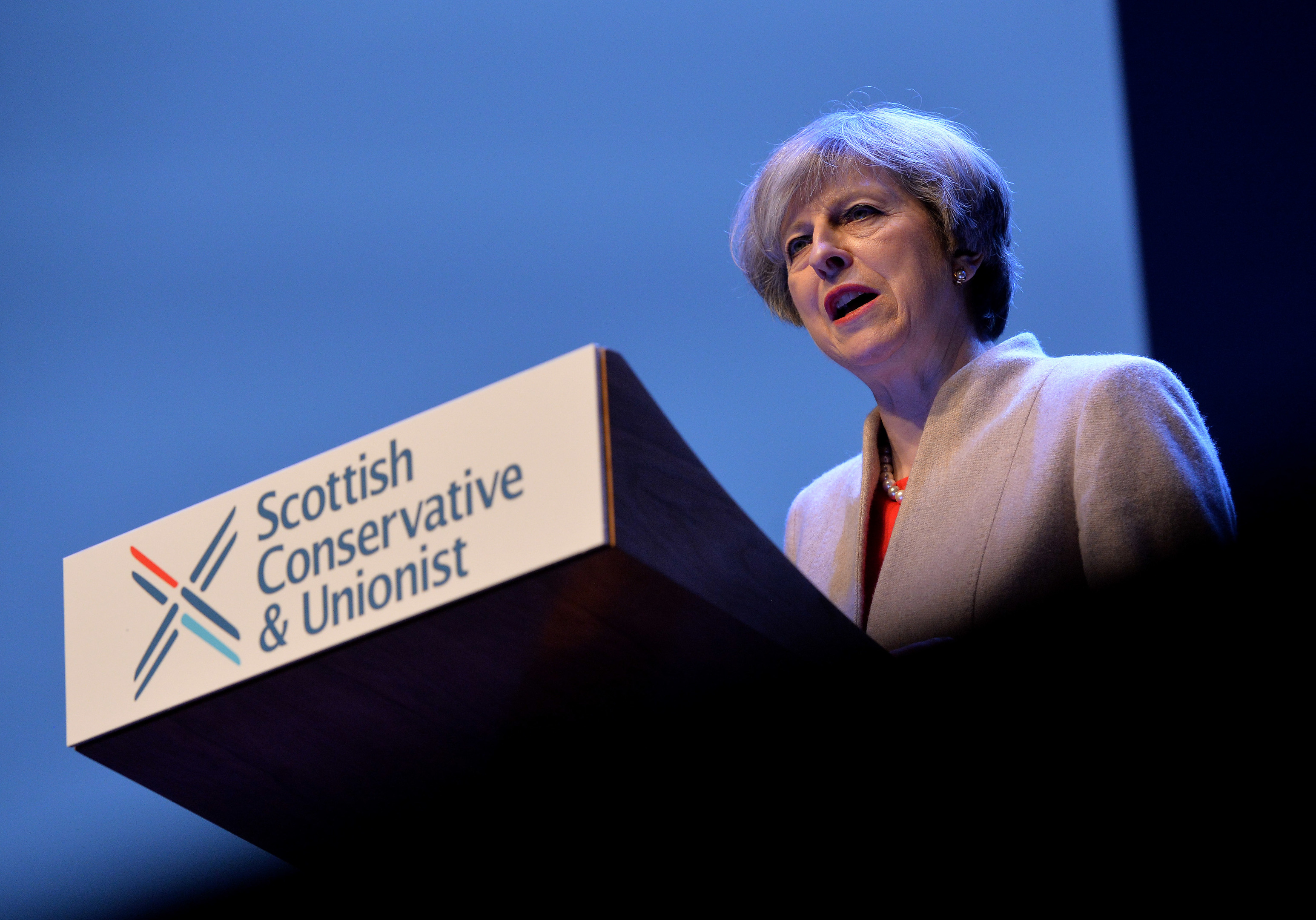
THERESA MAY has promised to put the preservation of the Union at the heart of Government policy as she set out her personal case for keeping Scotland in the United Kingdom.
In a speech to the Scottish Conservative conference in Glasgow delivered against the backdrop of renewed speculation about an independence referendum, the Prime Minister accused the SNP administration at Holyrood of selling Scotland short with a “tunnel-vision nationalism which focuses only on independence at any cost”.
. @theresa_may @ScotTories Conference congratulates party on beating the Scottish Labour Party for 1st time in 60 years pic.twitter.com/TddXlNAfnM
— Rachel Wearmouth (@REWearmouth) March 3, 2017
Declaring that there was “no economic case for breaking up the United Kingdom”, Mrs May said she would ensure that more powers would be devolved to Scotland as a result of Brexit – though she stopped short of meeting demands for the Scottish Parliament to take over full authority of areas such as agriculture and fisheries currently dealt with in Brussels.
And she vowed to “explicitly look to the interests of the Union” in all policy areas handled from London and to “collaborate and work together” with devolved administrations to improve outcomes in issues for which they have responsibility.
Addressing the Scottish conference for the first time as PM, Mrs May said she wanted to make clear that “strengthening and sustaining the bonds that unite us is a personal priority for me”.
In contrast, she accused Nicola Sturgeon’s SNP administration of treating politics “as if it were a game”, and pursuing policies “not in the best interests of Scotland but in the political interests of the SNP”.
READ MORE FROM THE SUNDAY POST
SNP has no mandate for second independence referendum, says Scottish Tory leader Ruth Davidson
In a savage onslaught on the Scottish government, she accused the SNP of “neglect and mismanagement” of education, “abysmal failure” on farm payments, “starving the health service” and replacing stamp duty with a tax which cost homebuyers more but brought in less revenue than expected.
“Politics is not a game and government is not a platform from which to pursue constitutional obsessions,” she said.
“It is about taking the serious decisions to improve people’s lives. A tunnel-vision nationalism, which focuses only on independence at any cost, sells Scotland short.”
PM: "Financial stability of a strong shared currency & central bank underpins all sectors of economy, across all 4 nations of UK."
— Rachel Wearmouth (@REWearmouth) March 3, 2017
Mrs May said that both Scotland and the rest of the UK have benefited from and depend upon “the fundamental unity of the British people which underwrites our whole existence as a United Kingdom”.
And she won a standing ovation as she declared: “We should never forget that the people who benefit the most from solidarity across the United Kingdom are not the strong and the successful, but the poorest and the most vulnerable in our society.
“We are four nations, but at heart we are one people.
“That solidarity is the essence of our United Kingdom and is the surest safeguard of its future.
“Let us live up to that high ideal and let us never stop making loudly and clearly the positive, optimistic and passionate case for our precious union of nations and people.”

Enjoy the convenience of having The Sunday Post delivered as a digital ePaper straight to your smartphone, tablet or computer.
Subscribe for only £5.49 a month and enjoy all the benefits of the printed paper as a digital replica.
Subscribe